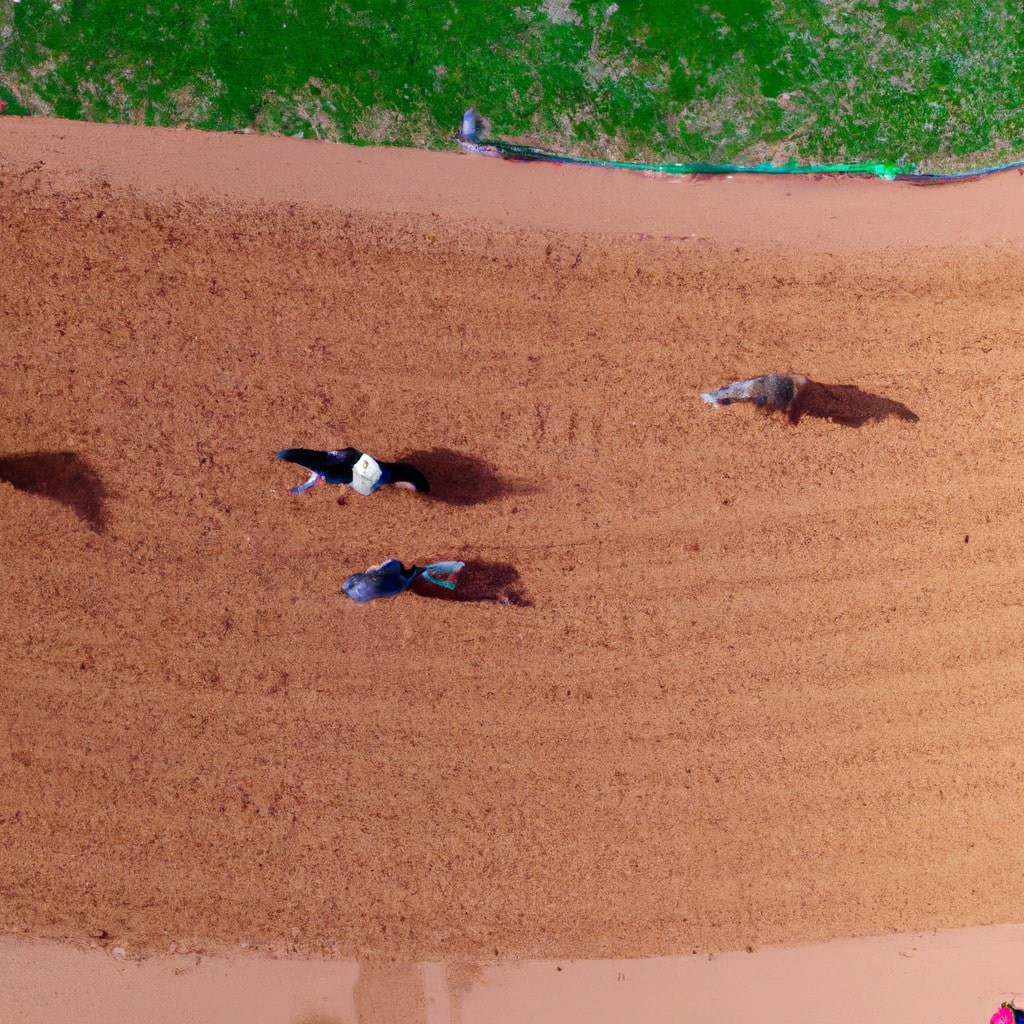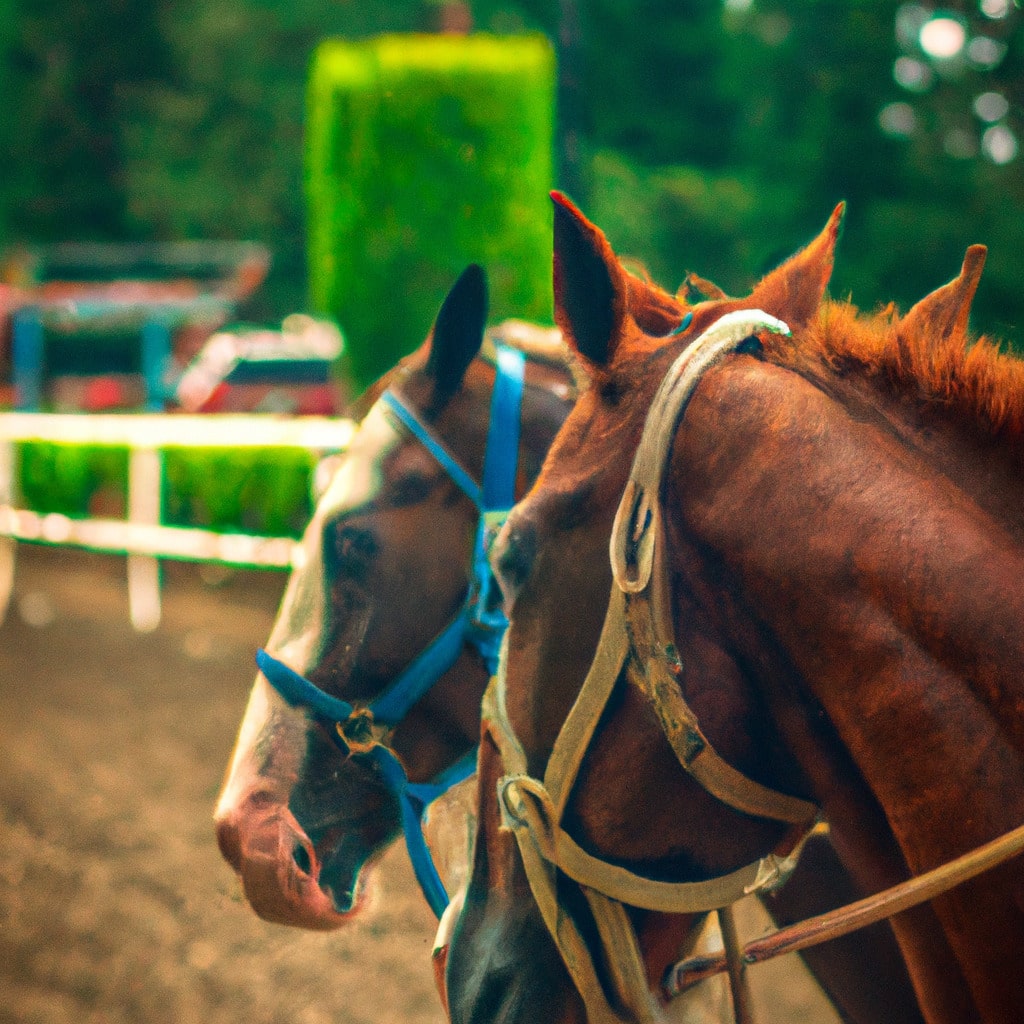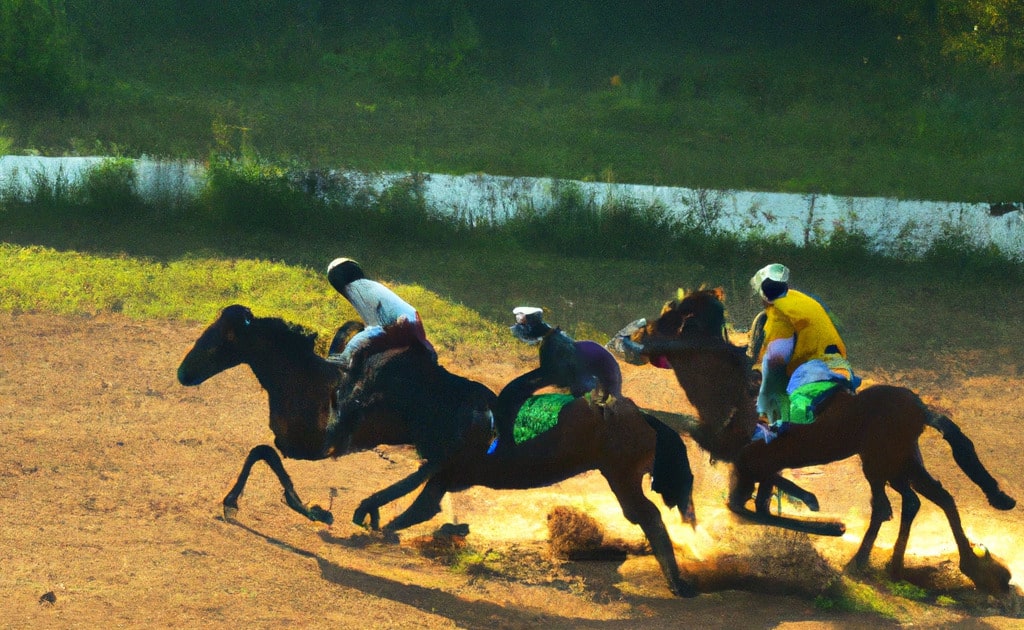The Prix de l’Opera: A Major European Turf Race
Horse racing has always been an exhilarating and captivating sport, captivating audiences with its blend of speed, skill, and sheer determination.
One race that holds a special place in the European turf racing circuit is the Prix de l’Opera.
This prestigious event, held annually in France, attracts top-class fillies and mares from around the world, showcasing the finest talent in the sport.
With a rich history and a reputation for delivering thrilling moments, the Prix de l’Opera has become a must-see for horse racing enthusiasts.
In this article, we will explore the origins, track, contenders, and the electrifying atmosphere surrounding this esteemed race.
The Origins of the Prix de l’Opera
The Prix de l’Opera, a major European turf race, has a rich history that dates back to the late 19th century. Established in 1878, this prestigious event was originally created exclusively for fillies and mares, making it one of the oldest races of its kind. Held at the iconic Hippodrome de Longchamp in Paris, France, the race quickly gained popularity and became a highlight of the European racing calendar.
The name ‘Prix de l’Opera’ was chosen to pay homage to the world-famous Palais Garnier, also known as the Opéra de Paris. This magnificent opera house, renowned for its architectural grandeur and world-class performances, served as the inspiration behind the race’s name. Just as the opera house showcases the finest talents in music and performing arts, the Prix de l’Opera showcases the finest fillies and mares in the world of horse racing.
Originally run over a distance of 2,000 meters, the Prix de l’Opera underwent a distance change in 1978, extending it to its current length of 2,100 meters. The track at the Hippodrome de Longchamp provides a challenging course for the participants, testing their speed, stamina, and tactical abilities. The race takes place on turf, adding an extra layer of excitement and unpredictability to the competition.
Throughout its long and illustrious history, the Prix de l’Opera has witnessed numerous memorable moments and remarkable performances. Legendary fillies and mares have graced the winner’s circle, leaving a lasting impact on the sport of horse racing. The race has seen fierce rivalries, breathtaking displays of athleticism, and thrilling finishes that have kept spectators on the edge of their seats.

The Track and Surroundings
The Prix de l’Opera, one of the most prestigious turf races in Europe, takes place at the iconic Hippodrome de Longchamp. Located in the heart of Paris, this historic racecourse offers a captivating setting for both participants and spectators alike. With its rich history, picturesque track, and stunning surroundings, the Hippodrome de Longchamp provides an unforgettable experience for all.
The track itself is a left-handed turf course that spans over 2,400 meters. Its layout, featuring long straights and sweeping turns, presents a challenging and exciting course for the fillies and mares competing in the Prix de l’Opera. The undulating terrain adds an element of unpredictability, requiring jockeys to navigate their horses with precision and skill.
Surrounded by the breathtaking Bois de Boulogne, a vast parkland on the western edge of Paris, the Hippodrome de Longchamp offers a serene and picturesque backdrop for the race. Spectators can enjoy the beauty of nature while immersing themselves in the thrilling atmosphere of horse racing. The proximity to the city center also allows for easy access, making it a popular destination for racing enthusiasts and tourists alike.
In addition to its natural beauty, the Hippodrome de Longchamp boasts modern and state-of-the-art facilities. The grandstands provide excellent views of the track, allowing spectators to witness the exhilarating moments of the Prix de l’Opera up close. The racecourse also offers a range of amenities, including dining options that cater to various tastes and preferences. From casual food stalls to elegant restaurants, visitors can indulge in delicious cuisine while enjoying the races.
The Contenders and the Thrill of Competition
The Prix de l’Opera, a highly anticipated event in the European turf racing circuit, attracts top-class fillies and mares from around the world. This prestigious race showcases the finest female racehorses, each with their own unique qualities and abilities, creating an atmosphere of excitement and anticipation.
Trainers carefully select their contenders for the Prix de l’Opera, considering various factors such as form, fitness, and suitability for the distance and track conditions. They analyze past performances, assess the strengths and weaknesses of each horse, and make strategic decisions to give their contenders the best chance of success. Jockeys, too, play a crucial role in the outcome of the race, employing their expertise and tactical skills to guide their mounts to victory.
The betting markets come alive with speculation and analysis as punters try to predict the winner of the Prix de l’Opera. Expert handicappers and racing enthusiasts study the form, analyze past performances, and assess the current condition of each contender. The odds fluctuate as the race day approaches, reflecting the shifting opinions and predictions of the betting public.
On the day of the race, the atmosphere at the Hippodrome de Longchamp is electric. Spectators fill the grandstands, eagerly awaiting the start of the Prix de l’Opera. The tension builds as the fillies and mares parade in the paddock, their sleek coats glistening in the sunlight. The excitement reaches its peak as the horses make their way to the starting gate, ready to embark on their quest for victory.
As the gates spring open, the fillies and mares burst forward, their hooves pounding the turf with power and grace. The race unfolds with speed and intensity, each horse striving to gain an advantage over their rivals. Jockeys skillfully navigate their mounts through the field, seeking the perfect position to make their move. The crowd watches in awe as the contenders showcase their speed, agility, and determination.
The final moments of the race are often the most thrilling. As the fillies and mares approach the finish line, the crowd erupts in cheers, urging their chosen contenders to victory. Neck-and-neck battles, dramatic surges, and photo finishes are not uncommon in the Prix de l’Opera. It is a race that keeps spectators on the edge of their seats until the very last stride.
The winner of the Prix de l’Opera is greeted with jubilation and celebration. The victorious horse, jockey, and connections revel in the glory of their triumph, knowing that they have achieved something truly remarkable. The race leaves a lasting impression on all who witness it, creating memories that will be cherished for a lifetime.
In conclusion, the Prix de l’Opera is not just a race, but a celebration of the beauty, skill, and spirit of female racehorses. It is a testament to the rich history and tradition of horse racing, captivating audiences with its thrilling displays of speed, agility, and determination. The race has evolved over the years, attracting top-class fillies and mares from around the world, and showcasing their talents on the prestigious turf of the Hippodrome de Longchamp.
The Prix de l’Opera is more than just a sporting event; it is a cultural phenomenon. It brings together people from all walks of life, uniting them in their shared love and admiration for these magnificent equine athletes. It symbolizes the intersection of art and sport, as the graceful movements of the horses on the track mirror the elegance and beauty of the opera house that inspired its name.
But beyond the spectacle and excitement, the Prix de l’Opera represents something deeper. It embodies the indomitable spirit of these incredible animals, their unwavering determination to push their limits and reach for greatness. It is a celebration of the bond between horse and rider, a partnership built on trust, communication, and mutual respect.
The Prix de l’Opera also highlights the dedication and passion of all those involved in the sport of horse racing. From the trainers who tirelessly prepare their horses for the race, to the jockeys who skillfully guide them to victory, and the owners and breeders who invest their time, resources, and love into these magnificent creatures. It is a testament to their unwavering belief in the power and potential of these equine athletes.
As spectators, we are privileged to witness the magic of the Prix de l’Opera. We are captivated by the thundering hooves, the breathtaking speed, and the heart-stopping finishes. We are moved by the deep connection between horse and rider, a bond that transcends words and touches the deepest parts of our souls.
So, as we reflect on the Prix de l’Opera and its significance, let us appreciate the beauty, grace, and power of these incredible animals. Let us honor the dedication and hard work of all those involved in the sport. And let us continue to support and celebrate the Prix de l’Opera, ensuring that its legacy lives on for generations to come.
What is it about these magnificent animals that captivates our hearts and ignites our passion?


